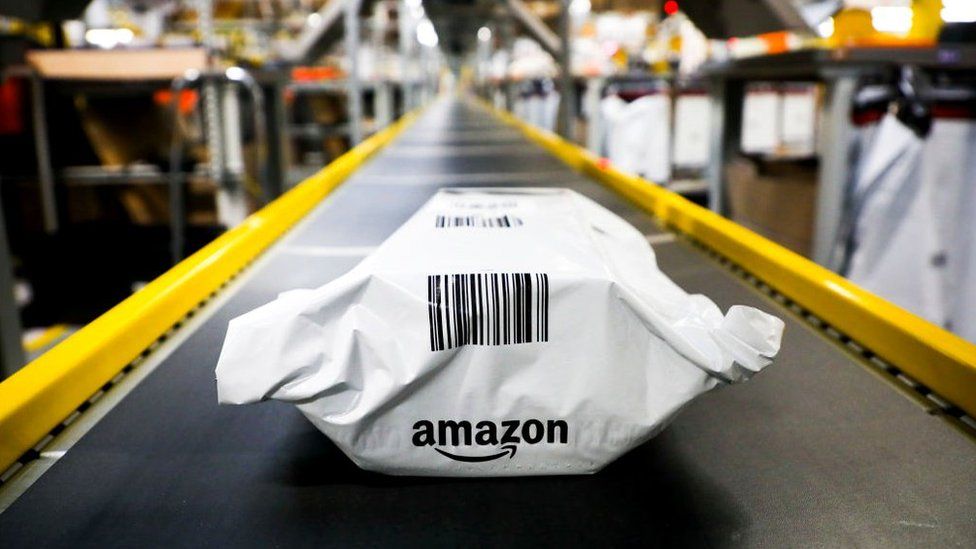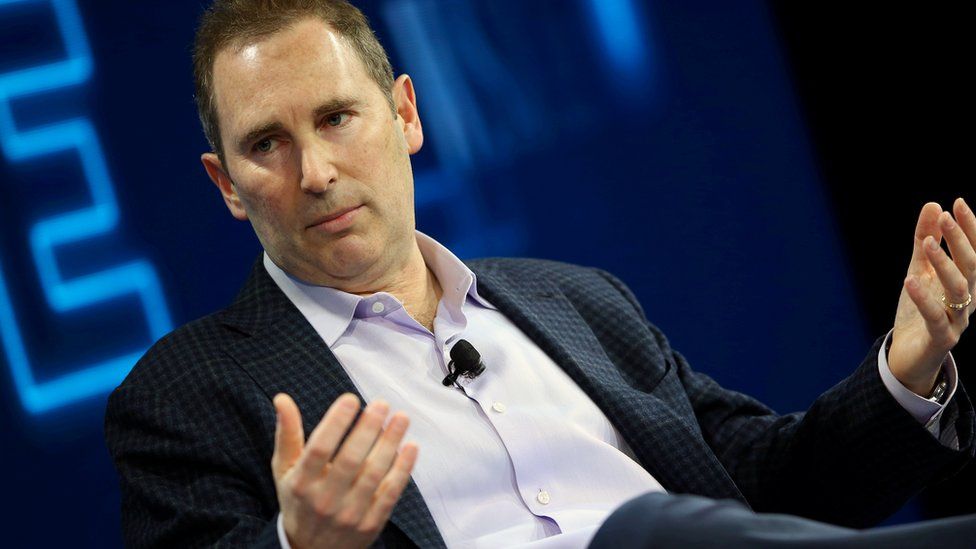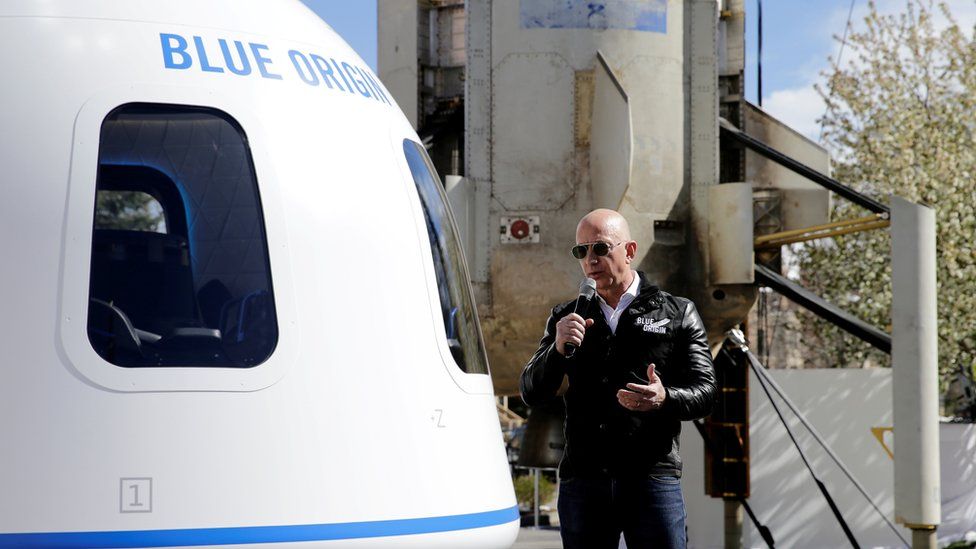

In 2004, Jeff Bezos and his technical adviser Colin Bryar drove together to the city of Tacoma, an hour south of Seattle in Washington State.
At that time Amazon was a multi-billion dollar company. However they were headed to Amazon’s customer services centre – where they were to spend two days as customer service agents.
“Jeff was actually taking the calls himself”, Bryar says. He recalls that a complaint on one product in particular kept coming in. “Jeff’s eyes went wide,” he says.
Bezos was frustrated. There was clearly something wrong with the product, but it hadn’t been escalated. Later that day he sent out an email asking for more efficient ways of flagging faulty products.

Bezos steps down from Amazon on Monday – exactly 27 years after he founded it.
In that time he has developed a series of unusual leadership principles – which some argue are the backbone of his success. Others believe they speak to everything that is wrong with Big Tech.
For Bezos, profit was a long-term aspiration. For a company to be successful it had to have happy customers – at almost any cost.
Nadia Shouraboura started working for Amazon in 2004. She went on to be invited into the elite “S-team” of Amazon managers – the senior managerial board. But when she first started, she thought she was going to be immediately fired.
“I made the biggest mistake of my life during our Christmas peak,” she says.
Shouraboura had ordered key products onto warehouse shelves that were too high. It would take time and money to get the right products off the shelves.
“I came up with a clever way for us to lose as little money as possible, and sort of fix the problem. But when I talked to Jeff about it he looked at me and said, ‘you’re thinking about this all wrong’.
“You’re thinking how to optimise money here. Fix the problem for customers, and then come back to me in a few weeks and tell me the cost.”
Bezos has many critics. Last month, a bombshell article from ProPublica claimed to have seen Bezos’ tax returns – and alleged Mr Bezos paid no tax in 2007 and 2011. It was a stunning claim about the world’s richest man.
Other negative stories about Amazon, its ruthlessness, its claims of monopolistic behaviour, haven’t helped Bezos’ reputation.
However, many people who work closely with him don’t recognise the characterisation that he is uncaring or selfish.
For them he is a business visionary – a man with singular focus who has created a legendary work philosophy and a company worth almost $1.8trn (£1.3tn).
Bezos likes small teams. He has a rule to keep meetings productive: make sure you can feed the whole group with two pizzas.
He hates PowerPoint presentations, preferring instead written memos for executives to discuss.
To avoid dominant personalities having too much sway, he’ll sometimes go round each person at a meeting, asking how they feel about a question.
And people who know him say he likes those who push back. “We would argue, and we would scream at each other,” says Shouraboura.
“Everything is very open, and on the table, and the conversations get heated and very passionate. But it’s about the subject, never against the person,” she says.
Amazon has a set of 14 “leadership principles”. One of those speaks of having “the backbone to disagree”.
And it seems Bezos genuinely wants to foster that culture at a higher level. Leaders should “not compromise for the sake of social cohesion”, the principle says.
There are questions, however, about whether that philosophy is always interpreted correctly down the chain at Amazon.
In 2015, the New York Times published an article with claims of a “bruising” work culture from former employees.
Bezos is a fan of engineering, inventions, machines. He’s obsessed with metrics – not a bad trait in the world of logistics. But critics say that obsession has human costs, particularly in Amazon’s numerous warehouses.
During the failed attempt by Amazon workers in Bessemer, Alabama, to form a union, I spoke to many workers who said they felt like a “cog in a machine”. Others would describe the feeling of being “constantly monitored”.

At more senior levels however, Bezos’ management style appears different. He likes his teams to have autonomy, which he believes fosters innovation.
Amazon Web Services (AWS), the astoundingly successful cloud computing service, on the face of it didn’t have much to do with Amazon’s core business: e-commerce.
However Bezos backed the idea, giving his trusted employee Andy Jassy the freedom, and capital, to go about creating a company within a company. Bezos views Jassy as an entrepreneur, not just a manager – a key part of why he will take over as Bezos’ successor.
“It’s easy to be brave when you’re a start-up” says Shouraboura. “As you grow it gets harder and harder to be brave, because now you’re risking a lot. He was always very brave.”
People who know him say that Bezos likes to approach problems “backwards”. “It’s a very specific process at Amazon,” says Bryar.
In the planning stage teams will do a reverse timeline – start with what a launch would look like and then work backwards.
“The first thing the team does is write a press release, which is usually the last thing companies write.”
This plays into Bezos’ view of time. It’s something he thinks about a lot. He’s installed a $42m (£30m), 10,000 year clock in a hollowed out mountain in Texas. It’s supposed to represent the power of “long-term thinking”.
And to the fair, Bezos has always approached business with the long game in mind. People close to him often use the word “methodical” to describe the customer obsession over short-term profits.

Always fascinated by space travel, later this month he aims to fly into space on the first crewed flight made by his company Blue Origin.
A petition to not allow him back to Earth has gathered nearly 150,000 signatures.
But like him or loathe him, Bezos has proved an extremely bright and able leader – someone who has changed the way companies around the world operate. – bbc.com